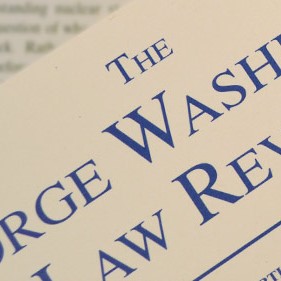David A. Hyman & William E. Kovacic · October 2014
82 GEO. WASH. L. REV. 1446 (2014)
How should the federal government be organized—and who (i.e., which departments, agencies, bureaus, and commissions) should do what? The issue is not new: President James Madison addressed governmental organization in his 1812 State of the Union Address, and, in the last century, it is the rare President that does not propose to reorganize some part of the federal government. On many occasions during the past century, nearly every part of the federal government has been repeatedly reorganized and reconfigured. In previous work, we have examined the dynamics that influence the assignment of regulatory duties to an agency, how those dynamics (and the allocation of responsibilities) can change over time, and how the specific combination of regulatory functions and purposes affects agency decision making. We apply the framework developed in previous work to examine the costs and benefits of the design choices made by the architects of the Consumer Financial Protection Bureau, and make some (appropriately hedged) predictions about the future prospects of this recent addition to the federal bureaucracy. We also briefly consider the implications of our analysis for the implementation of the Patient Protection and Affordable Care Act.

